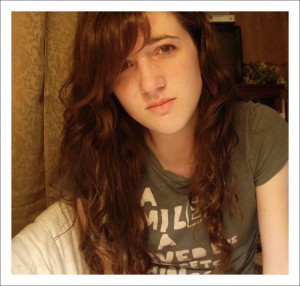 “Sick lit”, a sub-genre of literature that features characters who are struggling with physical or mental illness, or coping with issues like suicide or self-mutilation, or loss, has created a bit of a buzz in the media lately. The novels typically fall into the genre of young adult (YA) literature, aimed at teens, and people are beginning to wonder if the stories are detrimental to their readers.
“Sick lit”, a sub-genre of literature that features characters who are struggling with physical or mental illness, or coping with issues like suicide or self-mutilation, or loss, has created a bit of a buzz in the media lately. The novels typically fall into the genre of young adult (YA) literature, aimed at teens, and people are beginning to wonder if the stories are detrimental to their readers.
Does sick lit romanticize dying or encourage dangerous behavior in teens? Critics say the stories make dealing with something like cancer seem romantic, make “wallowing in depression” seem interesting and intriguing. Some also think the focus on psychological illnesses like anorexia or self-mutilation attracts kids to the mindset and encourages them to engage in self-harm.
Yet other critics of the genre accuse authors and publishers of simply jumping on the popular YA trend, exploiting the struggles of teens in order to get attention and sell books.
And yet, many authors boast of the readers who write to say how the books helped them cope through difficult times. Teens and adults alike seem to flock to these topics, perhaps because few other places discuss them as openly and honestly as YA novels. As The Guardian pointed out in a rebuttal to criticism against sick lit, YA is “a genre where difficult subjects have traditionally been most sensitively explored”.
Teens (and adults!) can have a hard time finding safe spaces to honestly and openly discuss the difficult issues they face as they grow — depression, loss, illness, sexuality. Writers and publishers of YA fiction take on the responsibility of providing not just optimistic and hopeful peeks into teenage life, but also a sensitive exploration of the painful reality many kids are dealing with every day. Readers need a place to go where they can be told the feelings and experiences they’re having aren’t abnormal, and there are healthy ways to deal with them — they don’t have to be ignored.
This taboo on talking about teen suicide and terminal illness is the same taboo we face every day when talking about end of life issues. All of this is a reality of life that people are dealing with. Ignoring it — especially in favor of happily-ever-after love stories about mythical creatures — does a disservice to readers who are searching for answers.
The controversy over taboos in teen literature is reminiscent of the decades-old battle against the messages in rock and roll, or the more recent backlash against violent video games and movies. It seems our culture won’t ever cease its search for someone to blame for the problems and pain that are a part of our everyday lives.
Certainly, these topics need to be handled with care. But the arguments against addressing them in pop culture tend to lean towards keeping them swept under the rug. And we in the end of life industry know that the worst thing to do with a taboo subject is to keep quiet about it, don’t we?
What’s your take? Have you read sick lit, and what kind of message do you think it shares in our culture?
For more info, read our reviews of “sick lit” books:
The Fault in Our Stars by John Green
By the Time You Read This I’ll Be Dead by Julie Anne Peters (coming soon)
Image by db Photography (Creative Commons)

 Does “Sick Lit” Romanticize Dying for Teens?
Does “Sick Lit” Romanticize Dying for Teens?



 How to Comfort A Dying Loved One
How to Comfort A Dying Loved One
 Our Annual Seven Holiday Gifts for Someone Who Is Grieving, 2024 Edition
Our Annual Seven Holiday Gifts for Someone Who Is Grieving, 2024 Edition














